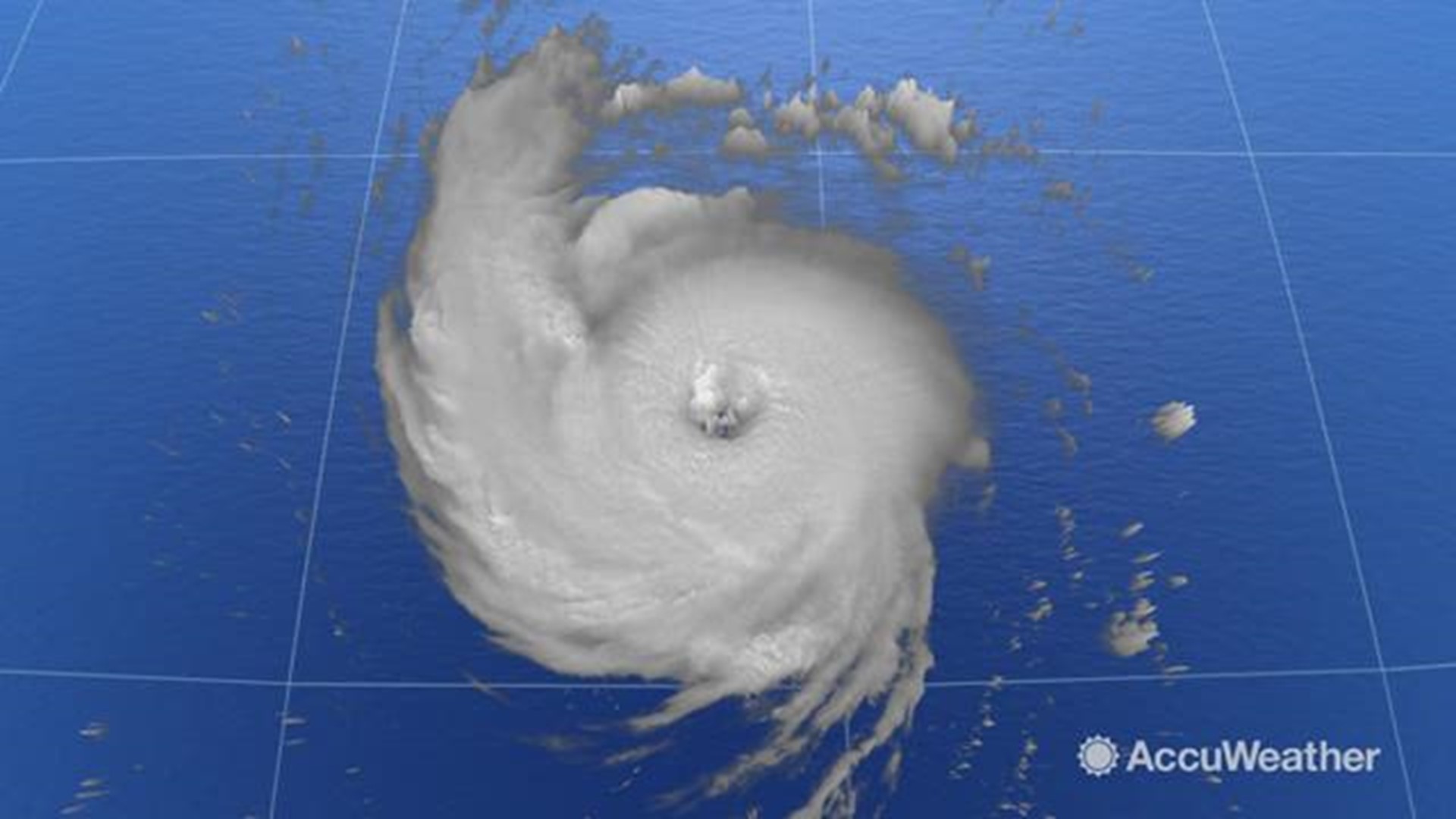During a hurricane, category terms are often used to discuss the level of severity expected from a storm.
Hurricane Florence, a Category 4 storm, was barreling toward the east coast Tuesday.
Florence was expected to blow ashore late Thursday or early Friday, then slow down and wring itself out for days, unloading 1 to 2½ feet of rain that could cause flooding well inland and wreak environmental havoc by washing over industrial waste sites and hog farms.
But, what exactly does it mean when a storm is a Category 4?
Categories are measured by the Saffir-Simpson Hurricane Wind Scale, a 1 to 5 rating based on a hurricane's sustained wind speed, according to the National Hurricane Center (NHC).
The scale estimates the level of property damage.
Hurricanes reaching a Category 3 are considered to be major hurricanes because of their potential for loss of life and damage. Categories 1 and 2 are still dangerous and preventative measures should be taken for safety.
The scale is named after Herbert Saffir, a consulting engineer in Coral Gables, Fla., and Robert Simpson, who was director of the National Hurricane Center from 1967 through 1973.
Here's a breakdown of the different storm categories, according to the NHC:
Category 1: Winds reach 75 to 95 mph. "Very dangerous winds" will produce some damage. Even well-constructed homes could have damage to the roof, shingles and gutters. Trees could lose large branches and shallow-rooted trees may topple. Extensive damage to power lines and power poles may result in power outages for several day.
Category 2: Winds will reach 96 to 110 mph. "Extremely dangerous winds" will cause extensive damage. Some homes may see roof and siding damage. Shallow trees may be uprooted and cause road blockage. Near-total power loss could cause outages for several days to weeks.
Category 3: Winds reach 111 to 129 mph. "Devastating damage will occur". Homes will see major damage, especially on roofs. Many trees will snap and cause road blockage. Water and electricity will be unavailable for several days to weeks.
Category 4: Major hurricane. Winds reach 130 to 156 mph. "Catastrophic damage will occur" and homes will see severe damage with loss of most of the roof as well as exterior walls. Most trees will snap or be uprooted and major road blockage will be seen. Most power poles will be down and electricity will be out for weeks or even months. Most of the area will be uninhabitable for weeks or months.
Category 5: Major hurricane. Winds reach 157 or higher. "Catastrophic damage will occur". A high number of homes will be destroyed. Fallen trees and power poles will isolate neighborhoods. Most power poles will be down and electricity will be out for weeks or even months. Most of the area will be uninhabitable for weeks or months.
For more information on hurricanes, visit the National Hurricane Center.

